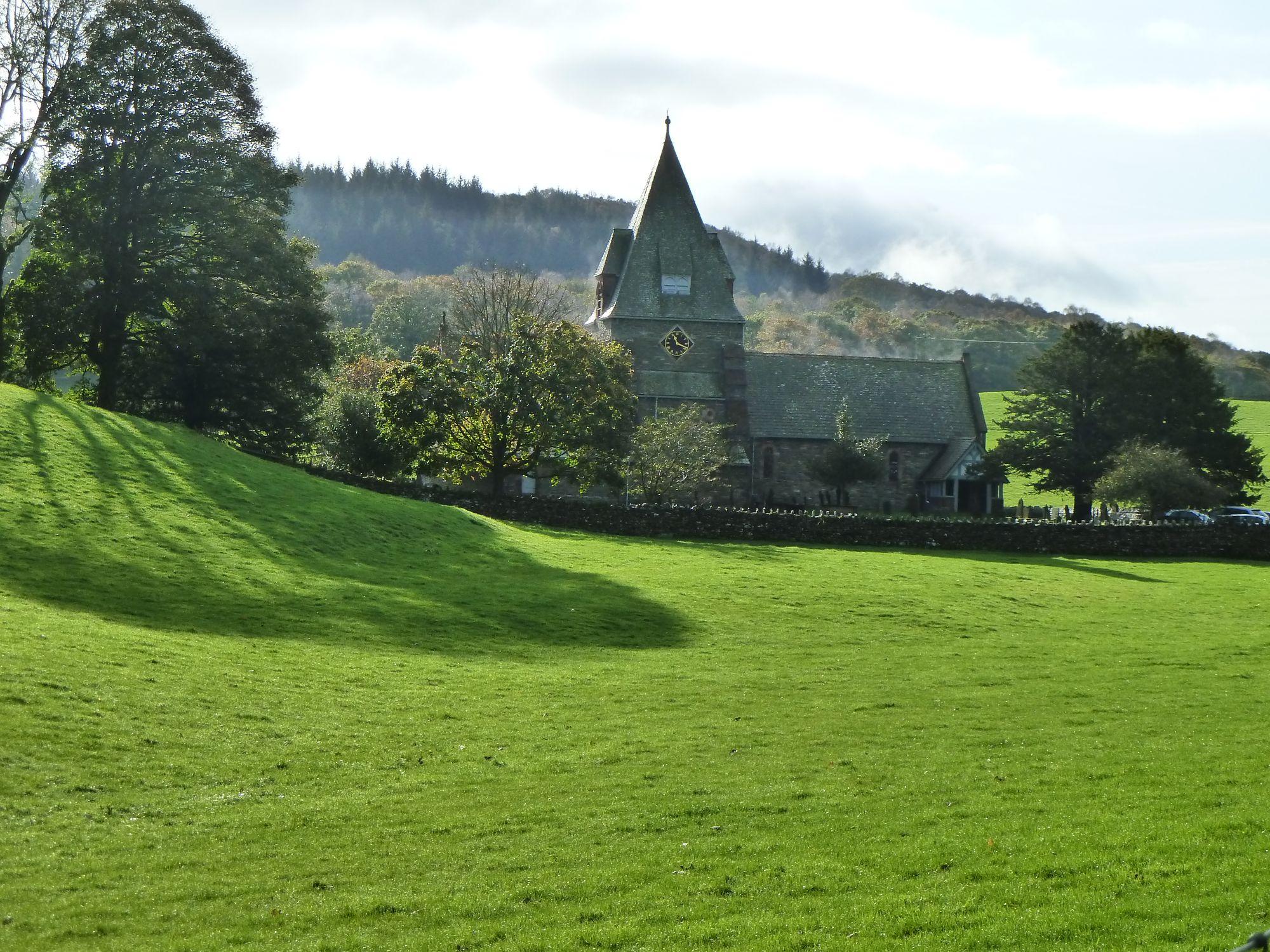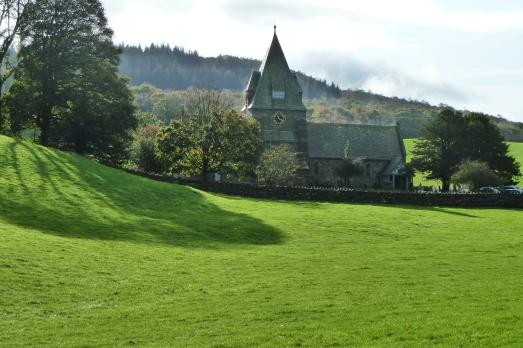Nestled in the small peaceful village of Finsthwaite near to the Lakeside pier at the foot of Lake Windermere and just a quarter of a mile from the Stott Park Bobbin Mill on the Newby Bridge to Hawkshead road is St Peter’s.
The original church was built in 1724 but was replaced by this larger one in 1874. The architect, Paley and Austin won a competition for a mountain chapel and you can see why, as the church appears as if hewn from the rock. The oversized buttresses and massive tower, with its tall pyramidal roof, ensure this building is rooted firmly in the landscape. It is a witty design; both inside and out, with an idiosyncratic attention to detail. Note the stone brackets, no two are the same. You can understand why Goodhart-Rendel, the popular commentator on 19th century architecture, called it one of his favourite Paley and Austin churches. There is also a certain eccentricity in the design, which is, perhaps, reflected today in the churchyard with its grazing sheep! The details are late Norman the intricate coloured vaulted ceiling is a reference to the medieval. This painting and decoration are complete, but some of the paintings of the walls and window rebates were removed in the early 1950s.
The church has many stained glass windows, including the east window of Christ and the Apostles by Henry Holiday. Other windows are by Powell of Whitefriars, and Shrigley and Hunt. The alabaster reredos is by Salviati of Venice.
The parish clock, by Potts of Leeds, was installed in the tower in 1918 as a monument to the Fallen of the parish. It was completely renovated and electrified in 2005. A set of tubular bells is housed in the tower were refurbished and computerized in 2012.
There are legendry associations with the Young Pretender, it is claimed a woman buried in the churchyard, known as the Finsthwaite Princess Clementina is his daughter.
Visitor comments tell us that the church provides a quiet, peaceful and spiritual place to rest awhile often when people are walking on the numerous local footpaths.


